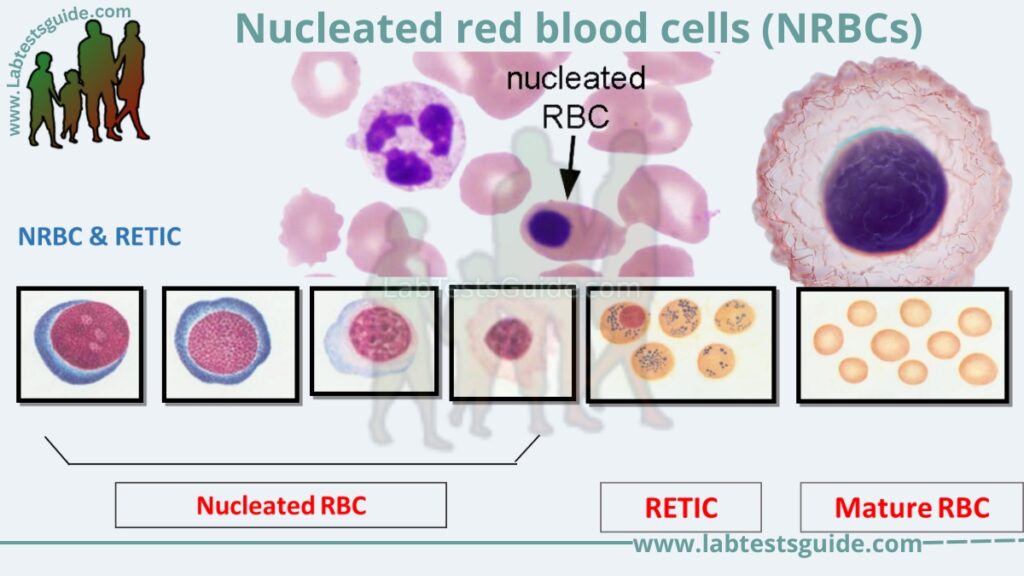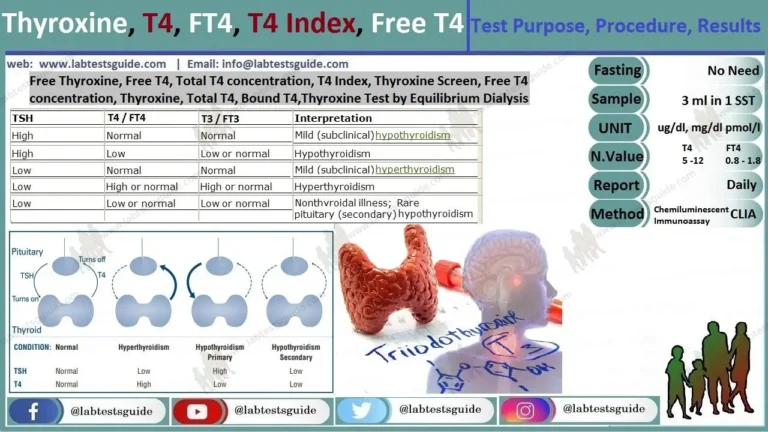Nucleated red blood cells (NRBCs) are red blood cells that contain a nucleus. Normally, red blood cells are nucleated, meaning they do not have a nucleus, as the nucleus is lost during their development to make room for more hemoglobin, which carries oxygen. The presence of nucleated red blood cells in the peripheral blood is an indication of increased production of red blood cells, which can occur in response to certain medical conditions, such as anemia or inflammation. Nucleated red blood cells are sometimes seen in the blood of newborns, but they should decrease in number as the individual grows older.

What is NRBC ?
Nucleated red blood cells (RBCs) are red blood cells that contain a nucleus, which is unusual as red blood cells normally lack a nucleus. They are produced in the bone marrow and are usually found in the peripheral blood of newborns, but they should decrease in number as the individual grows older. The presence of nucleated RBCs in the peripheral blood can be an indication of increased red blood cell production, which can occur in response to certain medical conditions, such as anemia or inflammation. The presence of nucleated RBCs in the peripheral blood can also be seen in some diseases, such as severe anemia or certain types of cancer.
What do nucleated RBCs indicate?
The presence of nucleated red blood cells (RBCs) in the peripheral blood can indicate increased red blood cell production, which can occur in response to certain medical conditions. Some of these conditions include:
- Anemia: In cases of severe anemia, the body increases its production of RBCs to compensate for the low oxygen levels.
- Inflammation: Inflammatory conditions can lead to an increased production of RBCs.
- Bone marrow disorders: Certain bone marrow disorders can lead to an increased production of RBCs.
- Blood disorders: Certain blood disorders, such as leukemia or myelodysplastic syndromes, can cause an increased production of nucleated RBCs.
It is important to note that the presence of nucleated RBCs in the peripheral blood is not a definitive diagnosis, and additional tests and assessments are needed to determine the underlying cause.
What is the normal range for NRBC ?
The normal reference range for nucleated red blood cells (RBCs) in the peripheral blood varies based on several factors, including age and the laboratory method used to perform the test. In general, the normal reference range for nucleated RBCs is considered to be 0-5 cells per 100 white blood cells in adults, and up to 10-20 cells per 100 white blood cells in newborns.
What causes Nucleated RBC?
Nucleated red blood cells (RBCs) can be caused by several factors, including:
- Increased red blood cell production: Nucleated RBCs are produced in the bone marrow and are usually a sign of increased red blood cell production, which can occur in response to certain medical conditions, such as anemia or inflammation.
- Blood disorders: Certain blood disorders, such as leukemia or myelodysplastic syndromes, can cause an increased production of nucleated RBCs.
- Bone marrow disorders: Certain bone marrow disorders, such as myelofibrosis or aplastic anemia, can lead to an increased production of nucleated RBCs.
- Newborns: Nucleated RBCs are commonly seen in the peripheral blood of newborns, and should decrease in number as the individual grows older.
It is important to note that the presence of nucleated RBCs in the peripheral blood is not a definitive diagnosis, and additional tests and assessments are needed to determine the underlying cause. If you have concerns about the presence of nucleated RBCs in your peripheral blood, it is best to discuss your results with a healthcare provider.
Ways to Decrease Nucleated RBCs
The ways to decrease nucleated red blood cells (RBCs) depend on the underlying cause of the increased production. Some of the possible approaches include:
- Treating the underlying condition: If anemia, inflammation, or a blood or bone marrow disorder is the cause of increased nucleated RBC production, treating the underlying condition may help to decrease the nucleated RBC count.
- Medications: In some cases, medications, such as corticosteroids or immunosuppressive drugs, may be used to reduce the production of nucleated RBCs.
- Blood transfusions: In cases of severe anemia, blood transfusions may be necessary to increase the number of RBCs and decrease the nucleated RBC count.
It is important to note that the best approach for decreasing the nucleated RBC count will depend on the individual’s specific circumstances, and that the treatment should be tailored to the underlying cause. If you have concerns about your nucleated RBC count, it is best to discuss your results and treatment options with a healthcare provider.
What is absolute nrbc in blood test ?
Absolute NRBC (Neutrophilic Polymorphonuclear Leukocytes) count is a measurement of the number of nucleated red blood cells (RBCs) in a given volume of blood. The absolute NRBC count is expressed as a number, usually per microliter (mcL) of blood. The absolute NRBC count is determined by counting the number of nucleated RBCs in a sample of peripheral blood and converting the result to a volume-based measurement.
An elevated absolute NRBC count can be seen in certain medical conditions, such as anemia, inflammation, or certain blood or bone marrow disorders. However, the presence of an elevated absolute NRBC count is not a definitive diagnosis, and additional tests and assessments are needed to determine the underlying cause. If you have concerns about your absolute NRBC count, it is best to discuss your results with a healthcare provider.
Possible References Used






